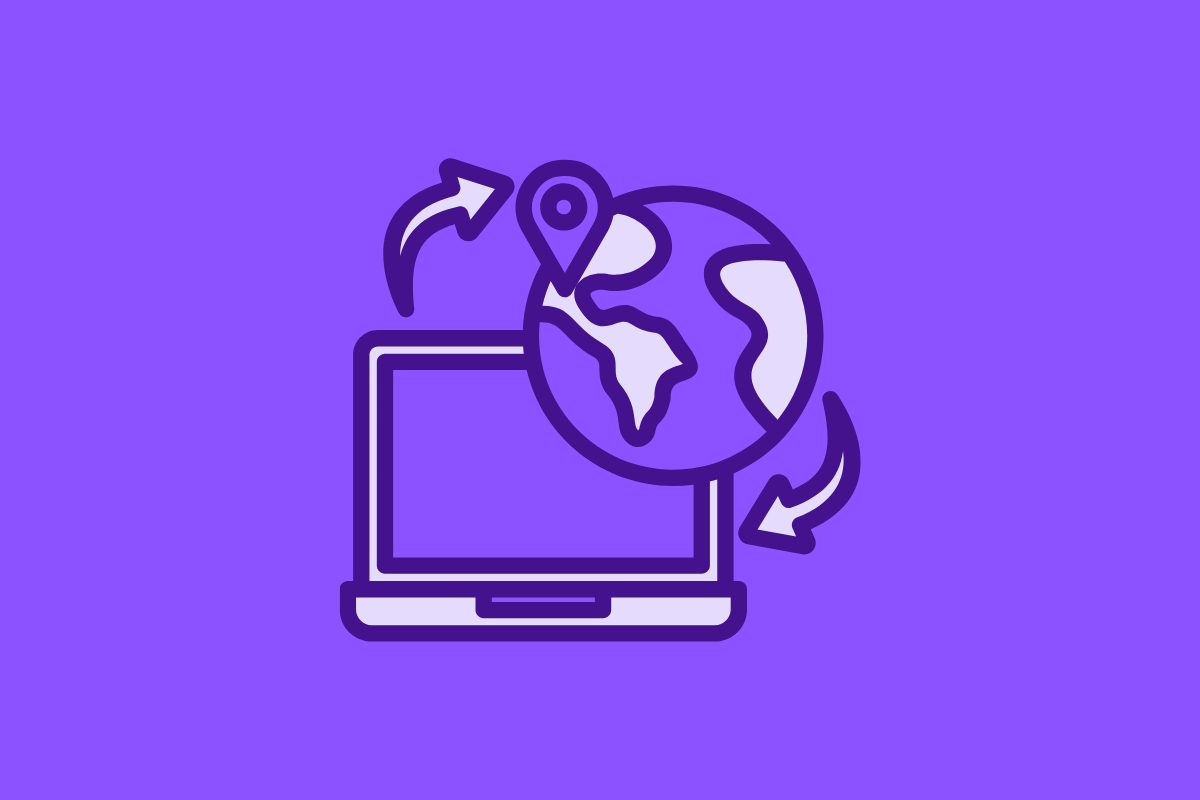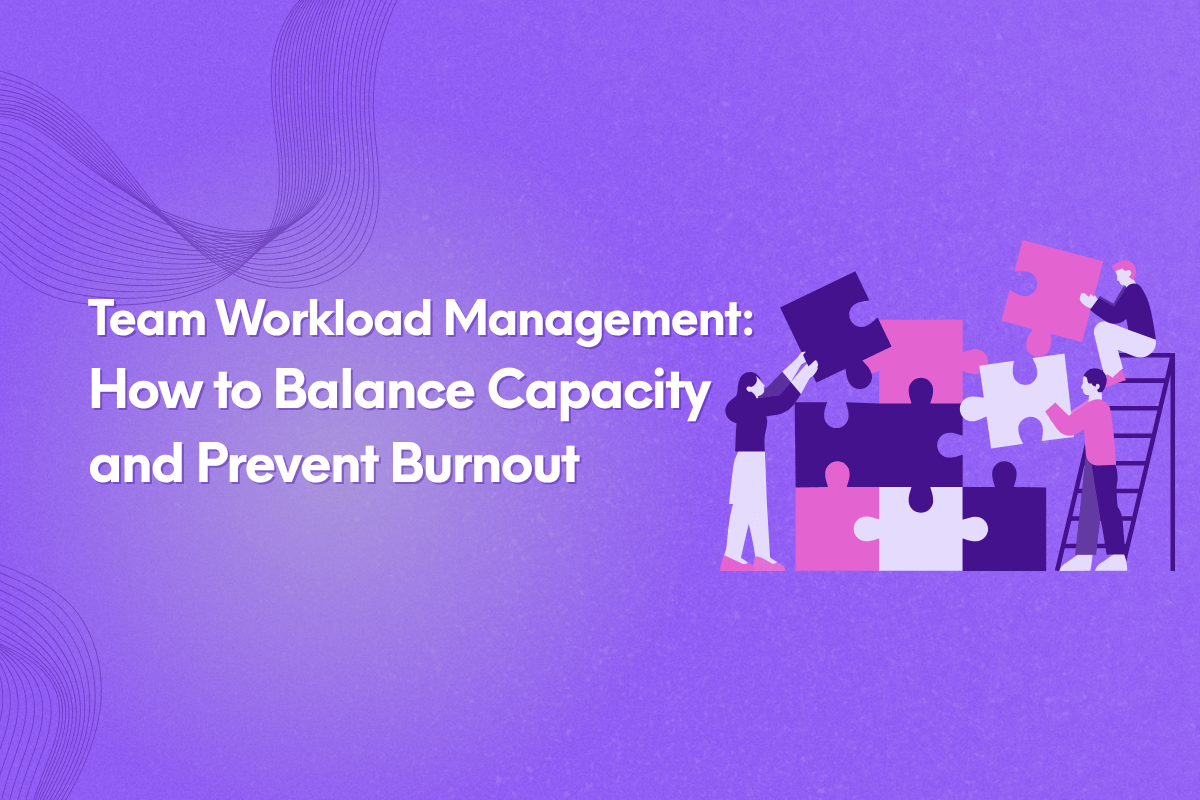One of the primary challenges for project managers and team leaders is managing team workload. You are working on multiple projects, with different teams, and with even shorter deadlines. And with teams moving to a remote and hybrid work setup, it becomes even more difficult to manage the expectations of a modern team.
Without effective workload management, team performance can suffer as a result of inefficiency, missed deadlines, or even burnout. It is especially imperative for leaders to gain actionable insights that improve team performance. This includes maintaining the well-being of the team and, ultimately, ensuring project success.
In this article, we will explore strategies and resources that will better help you manage team workload, from understanding team members’ capacities to the use of modern resources.

Why Team Workload Management Matters
Workload management is about analyzing the tasks that are assigned to all team members. This includes the process of identifying whether resources are or are not enough for teams to accomplish their work. Project managers and dev leadership should also determine whether projects can be effectively and efficiently completed without overwhelming individual team members.
Poorly managed workloads may lead to missed deadlines, a slowdown in productivity, increased stress levels, and burnout eventually.
Why is it important?
- Productivity: When an employee is overloaded with tasks and struggles to prioritize work on projects, progress will always slow down.
- Team Morale: Unbalanced team workloads, when one or more team members feel overworked, create resentment in the team.
- Burnout: Overload for a sustained period will lead to fatigue, disengagement, and ultimately turnover.
- Project Success: Poorly managed workloads will increase the risk of project deadlines not being met, poorer quality of work, and significant client frustration.
With proper workload management, teams are able to work more effectively and feel more motivated. Proper workload management can also contribute to ensuring the work quality is consistent.
Read More: Top Tips for Prioritizing Your Workload and Boosting Productivity
Burnout and Workload Imbalance
Burnout is one of the most serious impacts of poor workload management. Team members tend to experience burnout when they consistently feel overwhelmed or when they are doing work that they are not equipped to do. It's not just stress; motivation is lost, and ultimately, productivity diminishes.
When individual employees manage more responsibilities than others or are engaged in tasks that they are not trained or prepared for, this causes a work imbalance. Workload imbalance creates frustration and resentment among the team. The effects of burnout are not just limited to the individual members of the team as well.

Teams that are consistently burned out can miss deadlines, produce low-quality work, and show higher employee turnover. This affects the overall deliverables of your project and ultimately costs you more when new members of the team are onboarded and supported to fill the additional vacancies. Morale and collaboration suffer when team members can’t manage the workload or feel supported.
To avoid burnout, you need a proactive approach. Team leaders are responsible for monitoring workloads more closely, fairly assigning work, and understanding the capacities of the team. You should also encourage teamwork and communication to provide team members with an opportunity to express concerns before stress affects their work performance. Make sure to create a healthy work-life balance and flexibility, and celebrate the success of team members.
By confronting workload imbalance and constructing systems to manage stressors, teams can deliver work of high quality while still enjoying their work experience.
Signs Your Team’s Workload is Mismanaged
It's important that you spot the signs of workload imbalance early to prevent its negative effects on your team. When teams are struggling with workload management, they often demonstrate one or more of the following indicators, here are some of them:
- Frequently Missing Deadlines: Repeatedly failing to deliver is a sign of overwork or failure to prioritize correctly.
- Overtime and Burnout: If employees are routinely working more than a traditional work schedule, it may suggest their workload is not realistic or sustainable.
- Uneven Task Distribution: Some team members are completely overloaded in their work, while others are significantly underutilized.
- Decreased Engagement: Lack of involvement in meetings or lower enthusiasm and motivation are all signs of fatigue or frustration.
- Quality Issues: When employees are forced to deliver work quickly, mistakes or errors are likely to increase.
By identifying these warning signs early, leaders can intervene proactively to rebalance workloads and prevent burnout.
Read More: Reducing Cognitive Load in Dev Teams Through Connected Tooling

Step 1: Assessing Team Capacity
To achieve balance in workload, we must start with a careful review of capacity in the team. You have to have an understanding of team members' time, skills, and resources during project planning. Evaluating capacity is essential, since an overload of an individual team member can lead to unrealistic timelines for the project.
Key considerations include:
- Skills and Strengths: Assign tasks to leverage the skills of the client team members, which benefits time, quality, and efficiency.
- Availability: Assess what days team members are on vacation, any leave that may come up, future responsibilities, etc., which would diminish their capacity.
- Projects in Process: Understand what is already assigned to each team member to prevent a bottleneck in workload.
- Task Complexity: Rely on previous tasks to update timelines that conform to task difficulty and dependencies.
For example:
A developer who has 40 hours per week should not be assigned five high-complexity tasks. A better approach would be assigning the high-effort tasks and assigning the overall workload to be equally shared with the tasks that are simpler in nature, to keep up the pace without undue stress.
Step 2: Prioritizing Work Effectively
Prioritizing tasks effectively allows for the most urgent work to be performed first, with emphasis on the less urgent work being performed appropriately. Lacking a methodical prioritization system can lead to teams spending time on tasks that are deemed to have little impact, which in turn leads to the respective deadlines being missed and unneeded stress.
Methods of prioritization include:
- Eisenhower Matrix: Sort tasks by urgency and importance to help focus on the most important items.
- MoSCoW Method: Identify Must-haves, Should-haves, Could-haves, and Won't-haves so everyone can plan on what tasks to devote their efforts to.
- Weighted Scoring: Assign a score to tasks based on effort and impact for an objective as a way to establish priority.
When teams establish clear prioritization of tasks, it clearly indicates what is expected and ensures the team focuses on the higher-value tasks while also indicating when a task is of lesser importance.
Read More: The Psychology of Task Management: Why We Procrastinate

Step 3: Resource Allocation and Task Assignment
Proper resource allocation helps teams avoid bottlenecks while also ensuring a balanced workload is shared. Leaders have to think strategically when assigning tasks to avoid some team members becoming overloaded, while others are left with reduced workloads.
Here are some strategies you should consider when allocating resources:
- Workload Balance: It's vital to ensure that no one team member is overloaded, while another team member is having an underwhelming workload.
- Skills to Task Alignment: Assign a task to an individual based on their skills and expertise to allow for a more efficient task completion rate.
- Planning for Contingencies: Maintain an allowance of capacity when at all possible, for either unplanned tasks to come up, or priority tasks with time-sensitivity.
There are also tools you can use for resource allocation to help align with project planning.
- Project Management Dashboards: Workload distribution and the ability to oversee distribution and due dates more visually.
- Gantt Charts: Gantt charts can provide work timelines, document expenses, organization of performance dependency.
- AI-Powered Tools: Identify potential workload imbalances and recommend adjustments proactively.
Read More: The History of Gantt Charts: From Paper to AI-Powered Tools
Step 4: Regular Monitoring and Adjustment
Workload management is not something that you just do once. It is a process requiring ongoing engagement and observation in order to respond to changes. Regular review sessions provide opportunities for leaders to manage work distribution in new ways, to discuss bottlenecks, and to preserve flow in the work experience.
To put this into practice:
- Weekly or bi-weekly reviews to assess workload distribution.
- Watching patterns of overtime hours, and task completion rates.
- Re-allocation of work as other priorities shift.
- Addressing observed changes in bottlenecks with long-term solutions.
For example:
If someone's workload has regularly been heavier, a leader can redistribute the less critical work or possibly adjust deadlines to create a consistent work pace for sustainability, rather than the risk of burnout.

Step 5: Encourage Communication and Transparency
Open communication tends to create a culture where workload concerns can be discussed and addressed before the pressure builds up and creates real imbalance. Leaders should foster an environment where team members feel they can speak openly about challenges and the demands on their capacity.
What will help:
- Regular, one-on-one meetings to assess workloads and agreements.
- Visible dashboards for team workload progress, task allocation.
- Leaders solicit feedback, respect contributions, and allow for sharing discussions about load.
- Transparency reduces surprises, and team dynamics generally improve.
Step 6: Delegation and Empowerment
Delegation is an effective way to distribute work efficiently while also empowering team members to own their work. Leaders want to delegate but also be careful not to micro-manage. Provide autonomy but still provide guidance if needed.
Some ways you can do this:
- Delegate with consideration of an individual's strengths and expertise.
- Set clear expectations and deadlines.
- Foster autonomous decision-making, within a framework.
Delegation enhances trust, skill development, and a healthier team distribution of work.
Read More: 8 Essential Skills for Successful Macro Management
Preventing Burnout
Burnout is a constant possibility when people do not manage their workload effectively. Leaders can take a proactive approach to protect the health of their teams.
Ideas:
- Keep a watchful eye on workload intensity: Total hours logged, complexity of tasks, indicators of stress.
- Encourage work/life balance: Take breaks, flexible work time, take time off.
- Acknowledge work: Recognize milestones and contributions for team morale.
- Provide resources and support: Provide tools, training, and guidance for the team.
- Foster psychological safety: Create an environment where people can speak up and report workload issues without retribution/negativity.
Preventing burnout leads to greater engagement, retention, and performance.

Managing Workload in Remote and Hybrid Teams
Managing workloads in distributed or hybrid environments has its challenges. Having no visibility into someone’s work manner makes it difficult to measure workloads and identify areas of stress. In addition, delays in communication, time zone differences, and varying working styles may make it difficult to appropriately distribute tasks.
What to do:
- Give teams a tool to establish effective task management, progress, and visibility of workload through digital dashboards.
- Have daily or weekly check-ins to discuss workloads and adjust tasks from one team member to another.
- If possible, have team members use time tracking or reporting tools to track effort put into tasks to analyze workload and possible overload.
- Establish expectations about communication protocols, roles and responsibilities, deadlines, and project ownership.
Visibility and communication structures are paramount in creating a predictable workload and reducing the risk of burnout as much as possible as a team member who does not see coworkers physically may not be able to tell the state of workloads.
Read More: AI-Powered Task Management Software: A Game Changer for Dev Teams
Data-Driven Workload Management
Using data helps leaders make informed decisions in work and life. Tracking a few metrics will help assess the team's capacity, indirectly measure efficiency, and identify possible risks.
You can include these strategies and metrics when monitoring the performance of your team:
- Task completion rates – to identify bottlenecks and areas with a likelihood of improvement.
- Hours per task – to determine discipline capacity and monitor workload distribution.
- Velocity (the output that the team has completed each period) – to assess efficiency and unique performance trends over time.
- Predictive analytics on periods of higher workloads – so that you can proactively allocate and/or redistribute content.
A data-driven approach eliminates guesswork, and allows the leaders to make proactive, evidence-based adjustments.

Best Practices Checklist for Team Workload Management
Effectively managing workload goes beyond just task assignments! You need to have a system in place to promote equity, efficiency, and care of the team. Having a checklist of best practices will support the leader in maintaining the distribution of work, knowing the team's capacity, and minimizing the opportunity for burnout.
These steps are meant to serve as actionable steps for team leaders. The benefits include sustained productivity, enhanced team performance, and a high-quality, engaged work environment.
- Evaluate team capacity regularly
- Evaluate priority use of established frameworks (to-do lists/matrix)
- Use a dashboard or resource allocation tool
- Check in on progress, adjust the workload
- Manage open communication and transparency
- Recognize others' skill set and weak areas
- Track key performance indicators/datapoints
- Encourage an acceptable work-life balance/breaks
- Recognize and support productivity
- Utilize AI tools like Leiga to predict engagement etc.
Leiga: AI-Powered Workload and Capacity Management
Leiga is an AI-powered project management platform designed to simplify workload and capacity management. It consolidates task assignments, performance metrics, and risk alerts into a single dashboard, providing leaders with real-time insights and predictive analytics.
Key Features:
- Real-Time Workload Visualization – Instantly see individual and team workloads to prevent overload.
- Capacity Planning – Allocate resources effectively and adjust dynamically as priorities shift.
- Risk Alerts – Detect potential bottlenecks and delivery risks early.
- Performance Analytics – Track completion rates, velocity, and throughput for continuous improvement.
- Collaboration and Transparency – Centralized dashboards promote open communication and shared understanding.
- AI-Powered Workflow Automation – Automate repetitive tasks and the team's workflow so the team can focus on priorities.
Read More: Guide to AI Integrations and Workflow Automation for Your Tech Stack

Benefits of Using Leiga:
- Reduces burnout by balancing workload effectively.
- Increases delivery predictability and team performance.
- Provides actionable insights for smarter decision-making.
Leiga enables leaders to manage workloads proactively, optimize team performance, and maintain a healthy work environment.
Balancing team workload is essential for productivity, employee well-being, and project success. Leaders who actively monitor capacity, prioritize tasks, communicate openly, and leverage data-driven tools create high-performing, resilient teams. Platforms like Leiga make workload management easier by providing real-time visibility, predictive analytics, and actionable insights.
By implementing structured workload management strategies, teams can avoid burnout, optimize performance, and deliver projects more efficiently, creating a healthier, more engaged, and productive work environment. Experience the power of Leiga. Try it for free today!
- Streamline Your Workflow with Leiga
- Effortlessly automate tasks
- Boost productivity with AI insights
- Free forever — elevate project management
